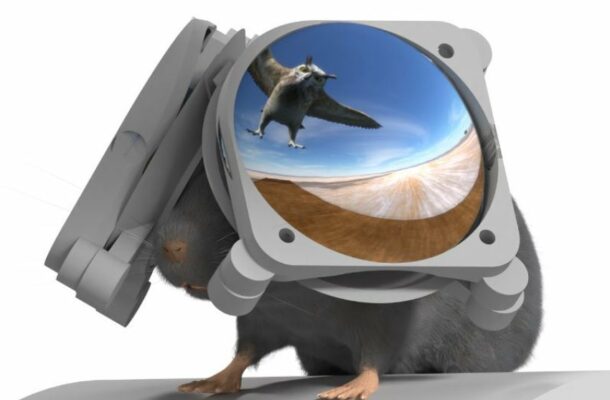Dive into the fascinating realm of rodent research as scientists unveil VR goggles tailored for mice, offering a simulated life of freedom. Explore the innovative miniature Rodent Stereo Illumination VR (iMRSIV) and how it enhances our understanding of mouse behavior.
Introduction: A Glimpse into the Virtual Wilderness for Lab Mice
In a groundbreaking endeavor, scientists from Northwestern University in Illinois have introduced a novel dimension to rodent research with the creation of Virtual Reality (VR) goggles designed specifically for mice. Termed the miniature Rodent Stereo Illumination VR (iMRSIV), these compact goggles transport lab mice into a simulated world, providing insights into their behavior while presenting an imaginative experience that extends even to the simulated threat of a bird attack.
iMRSIV Unveiled: Crafting Immersive Experiences for Lab Rodents
The iMRSIV stands as a testament to the ingenuity of modern research tools. Comprising two lenses and two screens meticulously designed to fit a mouse's anatomy, these VR goggles aim to offer lab rodents an immersive 3D view. Similar to VR experiences designed for humans, the iMRSIV transports mice into a virtual landscape, effectively disconnecting them from the external environment and enabling researchers to delve into the intricacies of their behavior.
A Window into Natural Behavior: Enhancing Understanding Through Simulation
The primary objective behind this innovative foray into rodent VR is to simulate a mouse's natural environment, thereby unlocking a deeper comprehension of their behavior. Daniel Dombeck, the leader of the study, highlights how these miniature goggles enable mice to "engage with the environment in a more natural way." By immersing them in virtual scenarios, researchers anticipate gaining unprecedented insights into the behavioral patterns of lab rodents.
Beyond the Ordinary: Simulating Airborne Threats for Research
A notable advantage of the iMRSIV extends beyond mere simulation, delving into the realm of threat scenarios. Researchers assert that these virtual reality goggles empower them to recreate airborne threats, such as those posed by birds of prey. This unique capability opens new avenues for understanding how mice respond to potential dangers, presenting a valuable tool for researchers seeking a comprehensive grasp of the rodents' natural instincts.
Future Implications: Paving the Way for Advanced Rodent Research
As the iMRSIV breaks new ground in rodent research, the potential applications extend far beyond the laboratory. This technological leap could revolutionize the study of animal behavior, offering researchers a nuanced understanding of how environmental factors influence the responses and instincts of lab mice. The journey into virtual reality for rodents not only marks a scientific milestone but also holds promise for uncovering secrets hidden within the complex tapestry of animal behavior.
Conclusion: Navigating the Virtual Wilderness - Mice in the World of Simulation
In the ever-evolving landscape of scientific exploration, the iMRSIV introduces a captivating chapter, immersing lab mice into a virtual wilderness. As researchers unlock the secrets of rodent behavior through the lens of virtual reality, the miniature Rodent Stereo Illumination VR emerges as a powerful tool, paving the way for a future where simulated experiences unravel the mysteries of the animal kingdom.


Comments